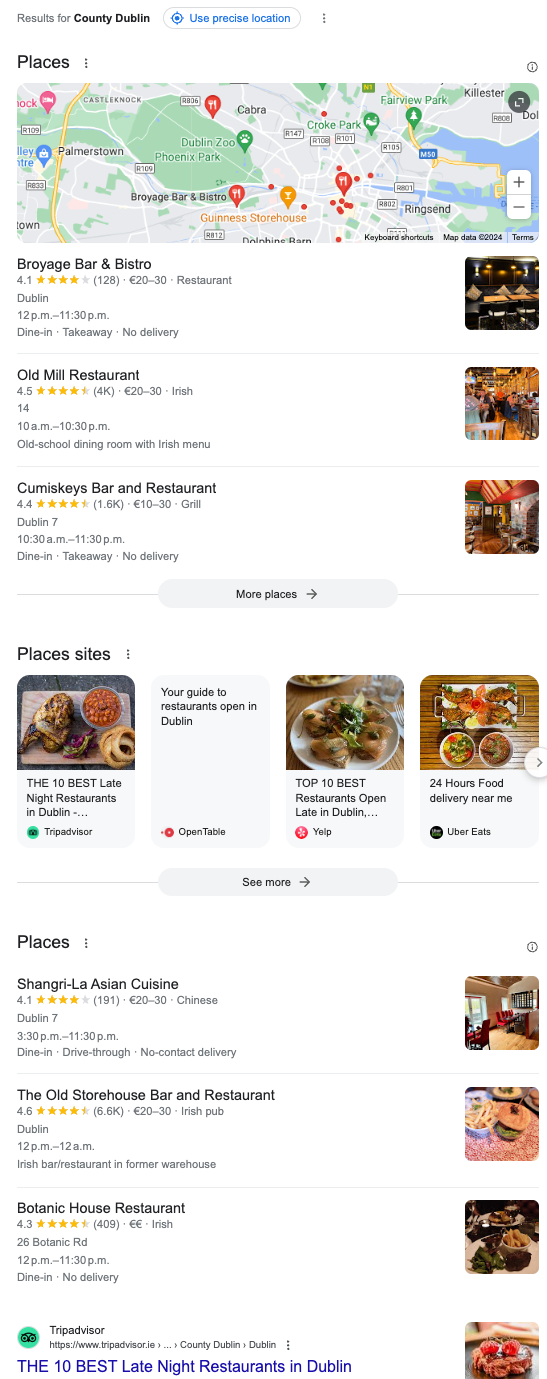Google Doubles Down on the Local Pack in EU
The appearance of a second Local Pack in the EU seems to fly in the face of the Digital Market Act's anti-self-preferencing rules.

As a "Gatekeeper," Google has modified local search results in the EU to comply with the Digital Market Acts (DMA). As part of that "compliance" effort, Google has added new local search elements including a "Places Sites" chip, a "Places Sites" carousel and additional aggregator rich results. Our research has indicated that searchers are unlikely to utilize these new elements.
Keeping Users on Google
What hasn't been discussed as much are the additional elements Google has added to search results in the EU that limit a user's ability to leave Google or additional search units that keep users within the Google universe.
This 50 second video shows the second Local Pack and the Pack persistence with a Profile click. Note the Map 'stickiness' as well. The search for 'restaurants open now' was performed with a Dublin IP address
The most prominent of these changes is a second Local Pack that can rank as high as position 3 in search results. In the US, there is one pack only and it typically appears at or near the top of the first page. Previously in the EU, and still in the UK, a second pack often showed up on page 2. But when these new EU Local results are clicked, a large Business Profile appears to the right while the pack stays visible to the left (see video above). And if a user does scroll down, an additional second pack often is placed prominently in the results.
Restaurant searchers, as noted, rarely get past the main Local Pack or first Tripadvisor listing. We saw little indication that the second pack played a role in their decisions. We saw no ads in these additional Local Packs and, without a "more places" link at the bottom, no way to show additional ads. So this isn't about money. The financial story associated with showing two Local Packs might well change in service industries – as might user interactions.
What's Pack-2's Purpose?
It all begs the question: why would Google add more self-preferencing elements that certainly capture eyeballs and might capture traffic while ostensibly in the process of complying with DMA's anti-self-preferencing requirement?
It calls into question Google's sincerity in attempting to comply with the new regulations.

